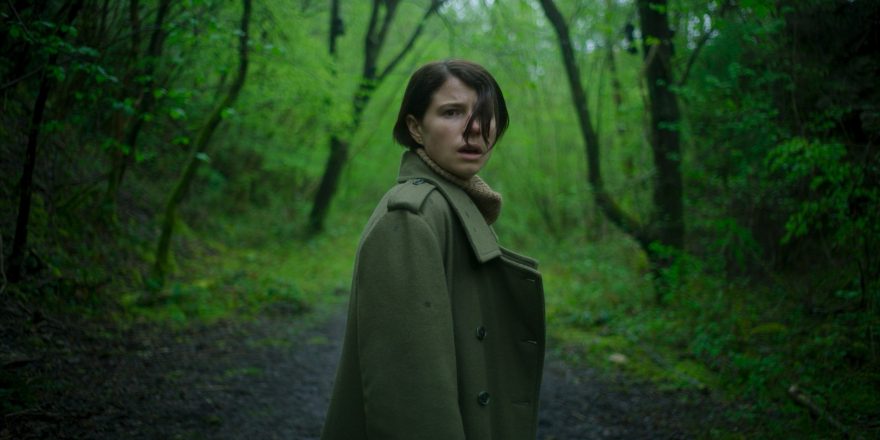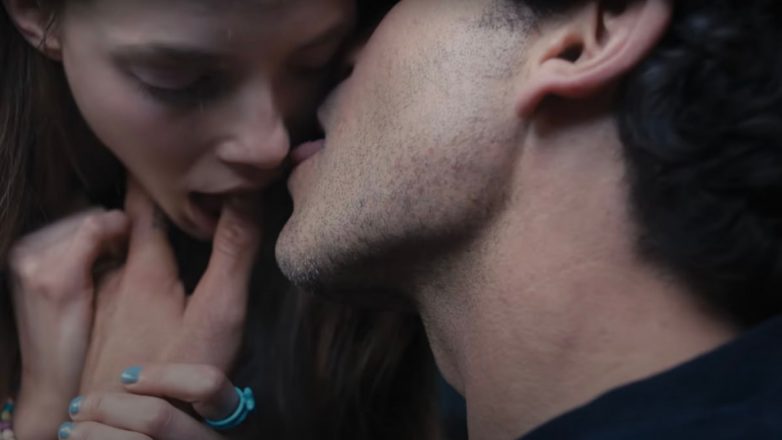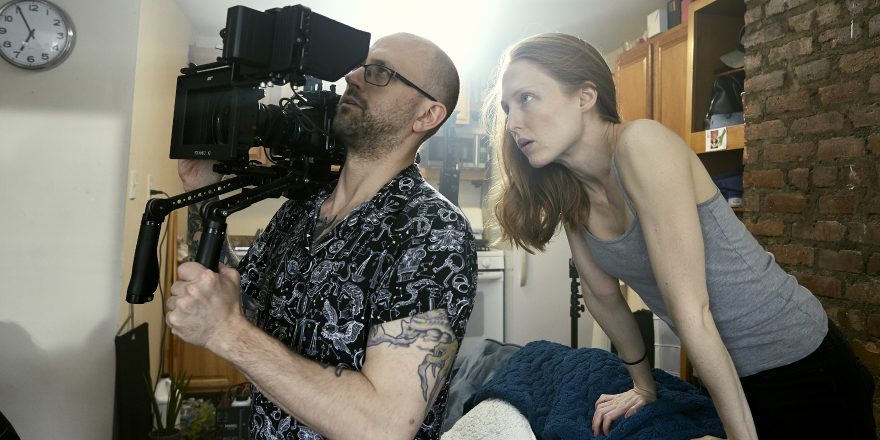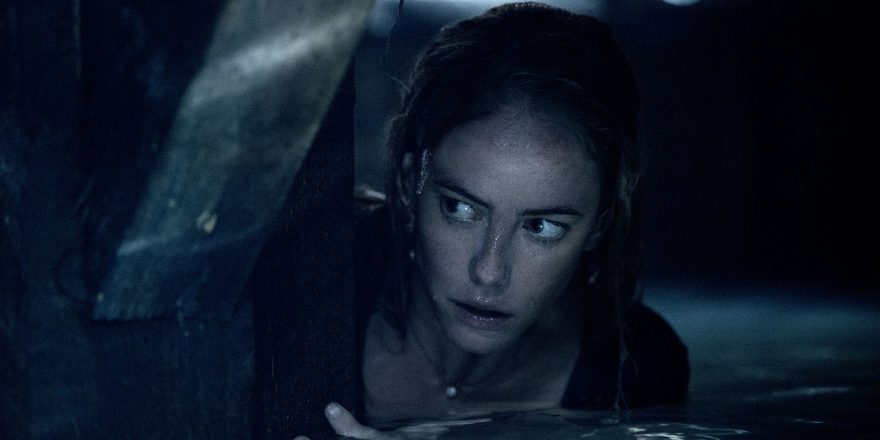WARNING: Spoilers ahead.
The biggest misconception about Men is that it’s a lecture. But Alex Garland’s underrated masterpiece – which was my favorite film of 2022 – is not that at all. Instead, it’s a cinematic Rorschach test and the beginning of a conversation.
Marketed as a horror film, which it absolutely is, Men is also an incredibly nuanced allegorical offering. This gorgeously twisted fairy tale doesn’t tell us what to think of it. Rather, much like the mysterious symbols of the Green Man and the Sheela na gig that are presented in the storyline, the film challenges us to decipher its meaning for ourselves. Unlike other art forms that can exist in a more ephemeral and sometimes theoretical space, film sometimes seems shackled to the need to have a Message. But, as Garland himself has said, that wasn’t his intent with this film at all.
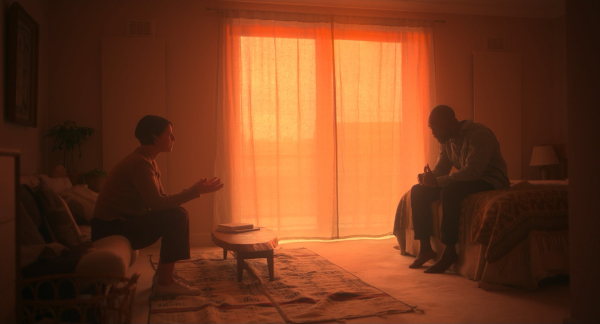
In this piece, I’d like to dive into an exploration of Men and, rather than explain it, instead celebrate its various elements and what they might inspire. When speaking about a painting, it often feels more appropriate to discuss elements like the style of the artwork, the materials used, the content, composition and color, rather than the meaning of the piece. I will attempt to discuss Men in this way.
First, some basics: an excellent Jessie Buckley plays Harper, a conflicted widow in desperate need of a holiday. Harper is grieving the death of her husband James (Paapa Essiedu), who we primarily see in suffocating, almost sepia-toned flashbacks in her London flat that show the emotionally and physically abusive tactics he used during their marriage. In a striking flashback in which Harper tells James she’s going to divorce him, James warns her, “I’ll kill myself […] I say it because you will have to live with it on your conscience.” After James falls to his death, either accidentally or purposely killing himself (like Harper, we are left to wonder), these words echo in her mind.
Was James’ death her fault? And how much responsibility does Harper bear in this tragedy?

In the rest of the film, Harper moves to the seemingly idyllic countryside town of Cotson to rest, only to find herself struggling for her safety and sanity as she battles various archetypal men, all played by the staggeringly talented Rory Kinnear. The film culminates in a horrific birthing scene in which the titular men birth one another, ultimately reuniting Harper with her dead husband, who continues to blame her for his death. In the film’s final shots, though, we find Harper outside in the sunshine, smiling as she reunites with her pregnant friend Riley, who comes to her aid.
First, I have to address the boldest artistic choice in the film, which is that Kinnear plays every male character in the remote English town. Each man seems like an archetype, existing both in the present and in a larger collective narrative. This choice recalls Joseph Campbell’s writings about mythology in his book The Hero with a Thousand Faces, in which he explores archetypes in the context of a universal mythic structure. (This is more commonly known as the “hero’s journey” or the “monomyth.”) Kinnear plays characters such as the awkward yet docile owner of the house, Geoffrey; the bestial and mysterious Green Man, who Harper sees in the forest; the cynical policeman; the naughty little boy, Samuel; and the perverted vicar. But these characters aren’t heroes. Not by a long shot. They are the titular villainous Men in Harper’s own hero’s journey.
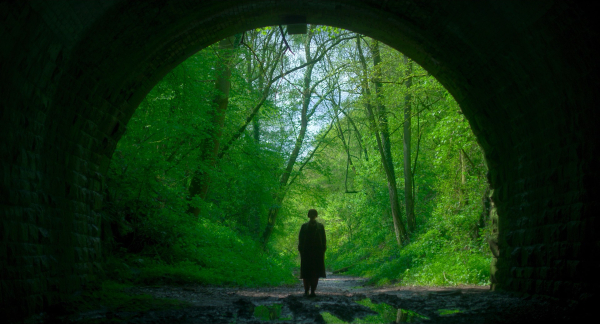
The artistic choice of having Kinnear play all of these men is clearly purposeful. But what’s not clear is Garland’s intention. I’m left to ask, why are the men played by the same man? And why does Harper never address this? Does she notice and choose to say nothing about it? Or are we, the audience, the only ones who see the truth? Much like fellow visionary filmmakers such as David Lynch, Yorgos Lanthimos, Charlie Kaufman and Lars von Trier, Garland doesn’t tell us what to think, but rather challenges us to answer these questions for ourselves. Regardless of the intent, the effect is clear – each of these men oppresses and menaces Harper, committing nuanced offenses until the ultimate horrific climax, in which they integrate completely.
And speaking of the climactic birthing sequence, I have to say it’s perhaps the most bombastic and ecstatic display of body horror I’ve seen in a long time. And I loved every second of it. Once night falls, the inscrutable and unknowable Green Man reappears to Harper in the yard. But instead of attacking her, he becomes rapidly pregnant to the point of bursting, and then births another man in a grotesquely operatic sequence of amniotic fluid and blood. This horrific Cronenbergian display of body horror repeats as each archetype is born, some through the anus, some through the spine, some through the open mouth of the man before him. Each birth looks painful, unnatural and violent. The sequence ends with Harper’s husband James being born. And as she grips an axe to defend herself, she finally gives up and sits on the couch. She’s exhausted. And so are we.
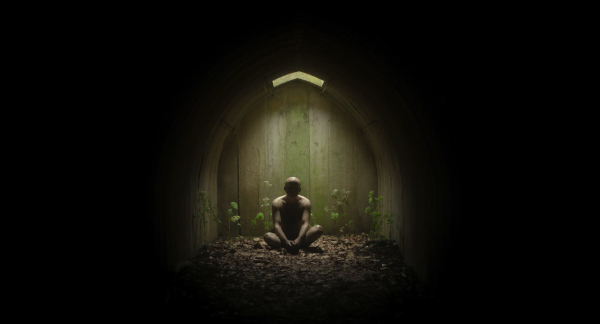
So what on earth could this ending mean? Sure, we can conclude that abusive men beget other abusive men. Violent fathers can raise their sons to become violent in a continuous cycle. But there could be another consideration here. Birth, though messy and painful, is an essential part of being alive. Every living person is the result of being born, either via C-section or vaginal birth. If nothing else, all people have at least this in common. So why is this sequence so grotesque to watch? Garland said the production meetings about this sequence were challenging. His team recoiled from photos of breech births, natural births and C-sections. I find it striking that the standout horror sequence in this film addresses this entirely universal process and flips it on its head. The sheer inventiveness of it really thrilled me, and I’m so grateful to filmmakers like Garland who take big swings like this.
I also have to address the striking color palates of this film. Because, as with all of Garland’s films, there is a methodology at work here. The chronological story of Men begins in a London flat, which hangs in heavily filtered brown, orange and yellow hues. The air looks thick as violent arguments rage.
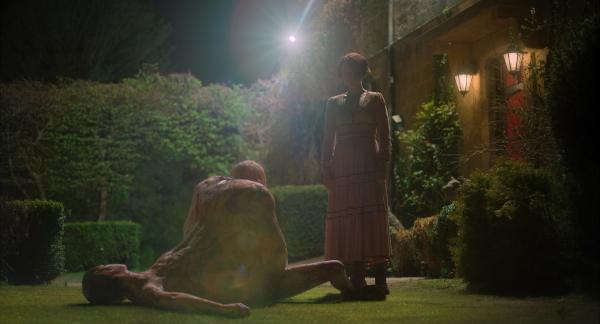
After James dies and Harper goes to the country, the film starts to feel like The Wizard of Oz, when Dorothy travels from black-and-white Kansas into the Technicolor wonderland of Oz. The green landscape positively glows around her, saturated to the point of surreality. The world becomes verdant and alive, blasting blinding primary colors that remind me of a child’s storybook. It seems to tell us: You’ve left the real world and have now entered a fairy tale. Perhaps we have. Or perhaps this is how Harper sees the outside world now, bursting and alive and new.
While the world glows green, the interior of the country manor boasts blood-red walls that seem as delicious and lush as a chocolate box. That is, until the danger sets in. As the film progresses, this red interior begins to feel threatening, almost throbbing with an oppressive sexual passion, and encasing Harper in a stop-sign red world that seems to say, “Why did you ever think you’d be safe here?” The deep red seems to be almost mocking Harper, and mimics the blood that starts to spill as the hellish world closes in on her. Harper realizes the safe haven of this country estate was a lie, that she’s trapped in the red interior of her own personal hell as the titular Men start to close in.

Finally, pink appears in Harper’s wardrobe as she sheds the beige and burnt sienna tones of her city life and ventures into the countryside. She wears earthy pink pants upon her arrival, and later moves into a pale pink dress reminiscent of a John William Waterhouse painting, feeling romantic and almost medieval in its design. Regardless of personal taste, pink is often considered a color of femininity, and this demure dress seems to be her statement in this vibrant, more primary-colored world.
Ultimately, Men provides a lush and nuanced playground for metaphorical and philosophical ideas to flourish. After initiating us into what appears to be a straightforward horror film, Garland takes us on a journey into mythology, symbolism and art itself. Men is a collection of images and themes that will mean something different to everyone who watches it. So try to forget about applying a clear cut message to Garland’s film and just sit back and enjoy the ride. I certainly did.


